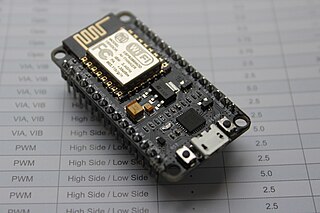
Balanced audio was developed to fight noise and other issues common in professional audio contexts. But it was only a matter of time before high-end consumer audio companies picked up on it as a gotta-have marketing differentiator. Below I explore a number of issues any manufacturer should think about before deciding that they need to support balanced inputs and outputs in their consumer hi-fi equipment.
Balanced doesn’t mean differential
There’s a fair amount of confusion, or at least assumption, regarding what balanced audio is. The primary defining feature of a balanced topology is that output signals consists of two legs — a hot and a cold with identical output impedance — and inputs that differentially sum the hot and cold legs. This produces a net signal where any common mode noise picked up in the interconnection is canceled out.
The above doesn’t require that a balanced output be differential. The noise cancellation will work as intended if only one leg of the a hot/cold pair is driven, as long as the leg that isn’t driven is terminated with the proper impedance. Before you cry “Foul!” many classic AKG mics are configured this way.
So, a truly balanced output doesn’t need to be differential. Further, it’s expected that a truly balanced device will produce identical or nearly identical output behavior whether it receives a fully differential input or an “AKG-style” input. Contrast this with a topology that I refer to as “pure differential.” In a pure differential system, it’s assumed that both hot and cold are actively driven with differential signals all the way from the source to the system output (typically loudspeakers). This distinction is important in the discussion that follows.
Typical pro-audio style balanced topologies are useless for consumer hi-fi audio
A lot of line-level balanced stuff in the wild consists of a single-ended core with balanced to single-ended and single-ended to balanced converters on the front and back. This works well for professional sound setups where the main motivation is to eliminate E.M. noise and other issues resulting from long cable runs. But for consumer hi-fi, where cable runs are so short that E.M. noise pickup is negligible, this approach offers no benefit whatsoever. Worse, it likely introduces signal degradation owing to the additional balanced receiver/driver circuitry. In fact, the requirement that a balanced device produce identical output whether or not the input is active differential raises all sorts of constraints that mean the highest level of fidelity while maintaining pure balanced behavior may not be possible or practical.
Maintaining the highest levels of fidelity with a pure differential approach is much easier. Further, a pure differential approach when implemented for the highest levels of fidelity may result in better performance than its non-differential equivalent. This is because a fully differential configuration has the potential to null even-order nonlinearities in the gain stages, something not true in general with pure balanced approaches. The problem with a pure differential approach is that it introduces use limitations the customer is not likely to fully understand.
Supporting balanced or differential audio gets very complex very quickly.
Will preamp inputs take only balanced/differential inputs or will there be provisions for single ended inputs as well? Supporting both potentially leads to a crazy lot of circuits and/or circuit switching.
Will outputs be both balanced/differential and unbalanced? Doing both probably means additional circuitry.
Will inputs and outputs be “truly balanced” or “pure differential”? Are you ready to educate your users in the proper use of pure differential devices?
Is it better to try removing the need to balance rather than use balancing to cover up the limitations of existing circuits?
The only thing balancing offers hi-fi, and then only when it is implemented as a pure differential topology, is the potential to null even-order nonlinearities generated by the electronics. Which is to say, any benefit seen by going to a pure differential setup means something in the system isn’t working as well as it could. This means you may be able to achieve the same benefit at much lower cost by optimizing your existing circuitry for better overall linearity.
Of course a pure differential topology will get rid of even-order nonlinearities even if they are small, and that might bring some added benefit after you’ve optimized things as much as possible. However, as with anything, be critical and weigh the costs. Directly following from this …
Is balancing line level signals worth it?
Running a pair of power amps differentially often results in better sound because power amps tend to be the most stressed devices in a system. They tend to operate more deeply in their nonlinear regions than other equipment. But you don’t need a balanced system to experience the benefit of differential amps — you only need to bridge your power amp setup. Note that many switching amp topologies are already bridged.
While it’s not uncommon for power amps to generate audible even-order nonlinearities in typical use, even-order nonlinearity in your line level designs may already be so low that turning them into a fully differential topology won’t give you any audible benefit. If there is a benefit, you may, as pointed out above, be able to achieve the same benefit at much lower cost by optimizing your existing line level circuitry for better overall linearity.
Are balanced systems still a thing?
There was once a lot of buzz (pun intended) in high-end hi-fi circles about balanced systems. But things have changed a lot in the last couple decades. What percentage of the market do the balanced-happy or balanced-sympathetic now represent? If it’s 10% or less, you will need to be become quite a hero in that circle if you’re going to make back your development costs. The alternative is that you have to commit yourself to convincing those outside the balanced circle that they need to get in. In deciding to do this, keep in mind that those folks abandoned the temptation at least once already.





